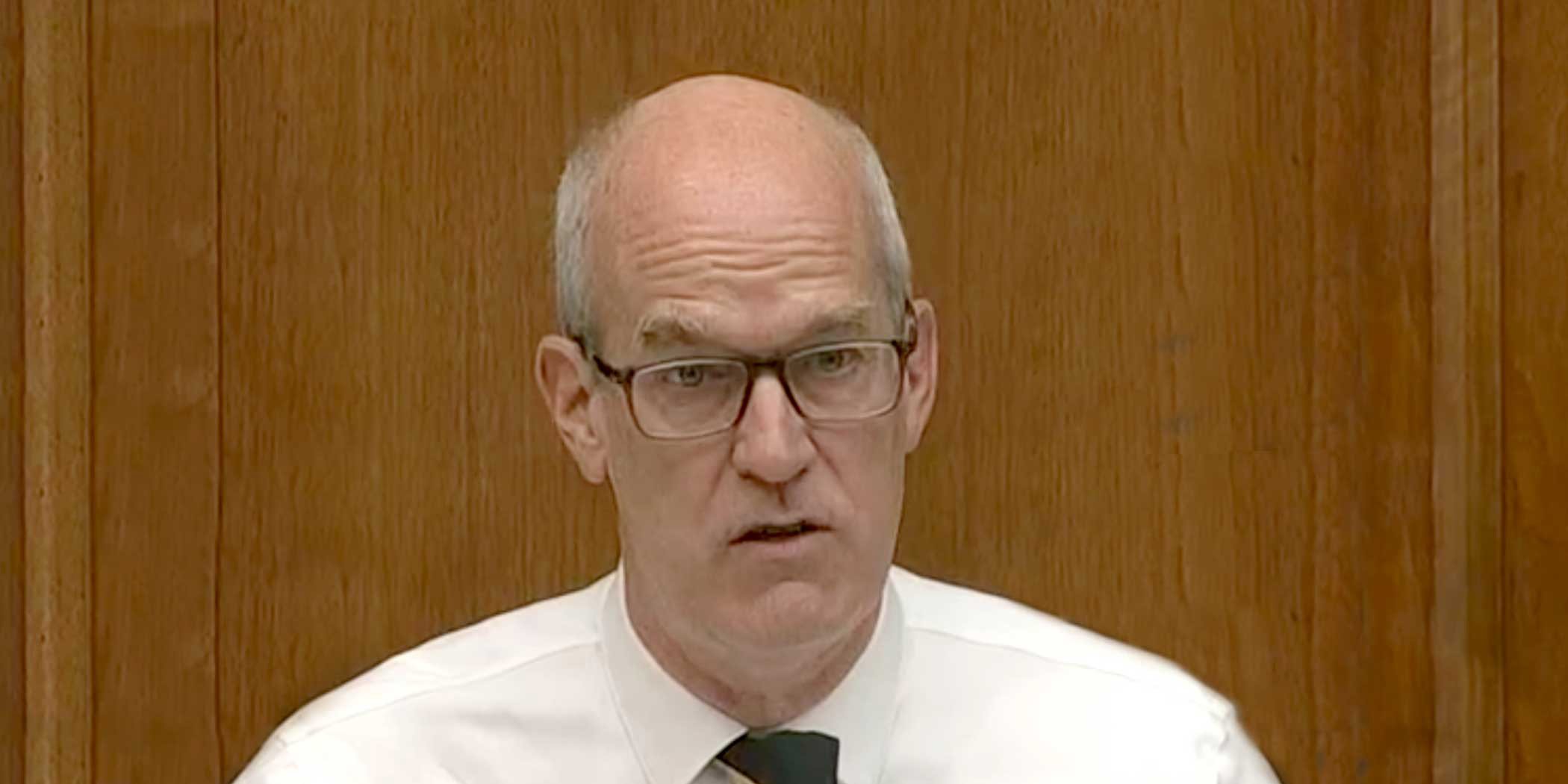Click Here to View This Page on Production Frontend
Click Here to Export Node Content
Click Here to View Printer-Friendly Version (Raw Backend)
Note: front-end display has links to styled print versions.
Content Node ID: 412903
Aviation will take a higher profile on Capitol Hill this year as the U.S. Congress returns to FAA reauthorization season. But unlike in the past, lawmakers are kicking off the reauthorization debate this year without user fees or air traffic control privatization taking center stage. That does not mean that the user-fee issue—which has been around for decades and remained contentious as well as a stumbling block to passage of past reauthorization bills—will not resurrect this go-around. But for now, lawmakers are optimistic that they will be able to reach an accord and approve a reauthorization bill this year.
A reauthorization bill provides funding levels and operating authority for the FAA and typically serves as a vehicle to address a range of aviation issues. The last such bill was approved in 2018 and authorizes the FAA through the end of Fiscal Year 2023 (September 30).

That five-year authorization was critical because it provided continuity for the FAA during tumultuous and changing times that included everything from the pandemic and the telecoms implementation of 5G networks to the rollout of the ADS-B mandate, noted NBAA president and CEO Ed Bolen.
“One of the things we’ve talked about over the last five years is how important that continuity is,” Bolen said. “Having a five-year reauthorization bill has been very helpful. I wouldn't want to have addressed any of this in an environment with endless short-term continuing resolutions.”
The five-year length was lauded when the 2018 bill passed because it took a few years and multiple extensions to adopt the 2018 bill. The one before that, approved in 2012, took five years and 23 extensions, something lawmakers never want to repeat.
Pushing FAA Reauthorization Bill Forward
Rep. Sam Graves (R-Missouri), who was set at press time to take over as chairman of the House Transportation and Infrastructure (T&I) Committee after serving as its ranking Republican, pointed to the need for collaboration during the most recent NBAA-BACE conference in Orlando. Discussing the bipartisan nature of the committee, he said the differences on the bill “aren't necessarily party differences” but could be between the House and Senate. But he stressed: “The last thing we want would be a situation where there is extension after extension.”

Further, Rep. Rick Larsen (D-Washington), who had been chair of the House aviation subcommittee but at press time was in line to become the ranking Democrat for T&I, has referenced plans on returning to a five-year bill.
Congress has until September 30 to get a bill done. “There's a long way to go between here and there as we swear in a new Congress,” Bolen acknowledged. “But we have a lot of people in leadership roles who have been around for a long time.” He noted leaders in both the House and Senate have long backgrounds in steering aviation policy on Capitol Hill. In addition to Graves and Larsen, this also includes Garret Graves (R-Louisiana) who was set to take over as chairman of the House aviation subcommittee after serving as ranking Republican. In the Senate, where the Democrats retained control, Sen. Maria Cantwell (D-Washington) is anticipated to remain chair of the Commerce Committee, which also has jurisdiction over FAA reauthorization.
“There are people who are very familiar with the FAA process and hopefully they will make the passing of a good bill and a strong bill a real priority and imperative,” Bolen added.
Beyond authorizing the FAA for five years (or whatever period lawmakers ultimately choose), the bill will touch on myriad issues of importance to all of aviation. While the legislative package is still taking shape, lawmakers have provided clues about what might be in it.
Progressing Advanced Air Mobility
Speaking during a Honeywell Air Mobility Summit in Washington, D.C. in September, Larsen said he expects that the upcoming bill would contain a separate title on advanced air mobility (AAM) to make sure that the FAA is properly organized to focus on the regulatory and operational requirements in a timely fashion. The FAA has been pressing to release operating and training guidelines that will facilitate the use of AAM in commercial operations in time for the entry-of-service of the first vehicles, roughly in late 2024.
Larsen expressed concern that the agency has looked at AAM as a research and development project and stressed that “it’s not R&D.”
AAM safety must be addressed, he said, but also noted a range of other issues such as electric charging stations and vertiport infrastructure. In fact, AAM is such a growing issue, Larsen quipped that the 2028 reauthorization bill could be an AAM bill.
Garret Graves (who is not related to Sam Graves) agreed and further stressed that Congress needs to ensure that the FAA modernizes its approach so it is not applying a 1970s approach to regulation to 2030s technology.
In addition to an entire title of the reauthorization bill dedicated to AAM, Sam Graves said that, for the first time, the upcoming bill likely will have a title dedicated to general aviation. Graves said such a section would address issues specific to the sector, but importantly “bring more attention to general aviation.” This includes highlighting the sector and the roles it plays.
One such issue that could find its way into a general aviation section is privacy. This has become a larger issue as flight trackers have followed aircraft and used those movements to “flight shame” celebrities and other high-profile individuals.
“We believe strongly that no person should have to give up their right to privacy just because they're getting on a general aviation airplane,” said Bolen, who raised the issue during testimony before congressional panels late last year. “That's something we've stressed with Congress, and Congress has supported the idea that there should be a right to privacy.”
Sam Graves also acknowledged the importance of the issue saying, “absolutely…we have to have privacy.” He expressed concern that privacy has not been adequately protected. “Today, it's so easy to get on the internet to track, see where [someone] is going. That obviously creates problems for individuals.”

Other issues that may be included could involve sustainability and efforts to eliminate lead in aviation gasoline, airport and community involvement, and other concerns that pilots and general aviation operators are facing.
Addressing Workforce Challenges
The reauthorization bill further is anticipated to continue to highlight workforce issues. Larsen noted that some of the recommendations released last year from the Women in Aviation Advisory Board were legislative in nature and worth exploring. In addition, the Youth Access to American Jobs in Aviation Task Force has further recommendations. “I do think we need to take [those] seriously and see how we can turn those into legislation,” he said.
Sam Graves further said that the committee is focused on workforce and remains open to ideas. “It’s been driven home…the workforce challenges that we have out there in aviation,” he said.”
As is typical, the reauthorization bill will have a significant focus on safety. But this time it will be especially so in the aftermath of the Boeing Max crashes and the number of mandates Congress passed surrounding certification and training. There have also been challenges created on that front, especially in light of a constrained and aging FAA inspector workforce and the complications brought on by the pandemic.
Testifying before Congress, General Aviation Manufacturers Association president and CEO Pete Bunce has underscored the issues involving the growing backlogs at the agency, as well as the issues surrounding turnover there. The reauthorization bill, Bunce said, “should place an emphasis on ensuring that FAA has the workforce, training, and skills to improve the certification process and keep pace with industry innovation.”
He further discussed the need to improve the regulatory process to reduce the backlog of technical standards, policy memos, orders, and advisory circulars. “It is important that the bill advances the aviation system with a positive impact on safety, innovation, competitiveness, aerospace jobs, and the manufacturing and maintenance industry,” Bunce said.
Sam Graves further stressed his belief that the FAA once again should focus beyond enforcement to advocacy. “We have to introduce advocacy back into [its] mission statement because we're not advocating for this industry.”
But to make sure the FAA needs to catch up with its backlog of work, Garret Graves noted that Congress also needs to be thoughtful about what it assigns to the FAA in the upcoming reauthorization bill. Graves said Congress should streamline its mandates to the FAA and eliminate outdated or unnecessary requirements to make sure the agency has the capacity to address the most pressing issues.